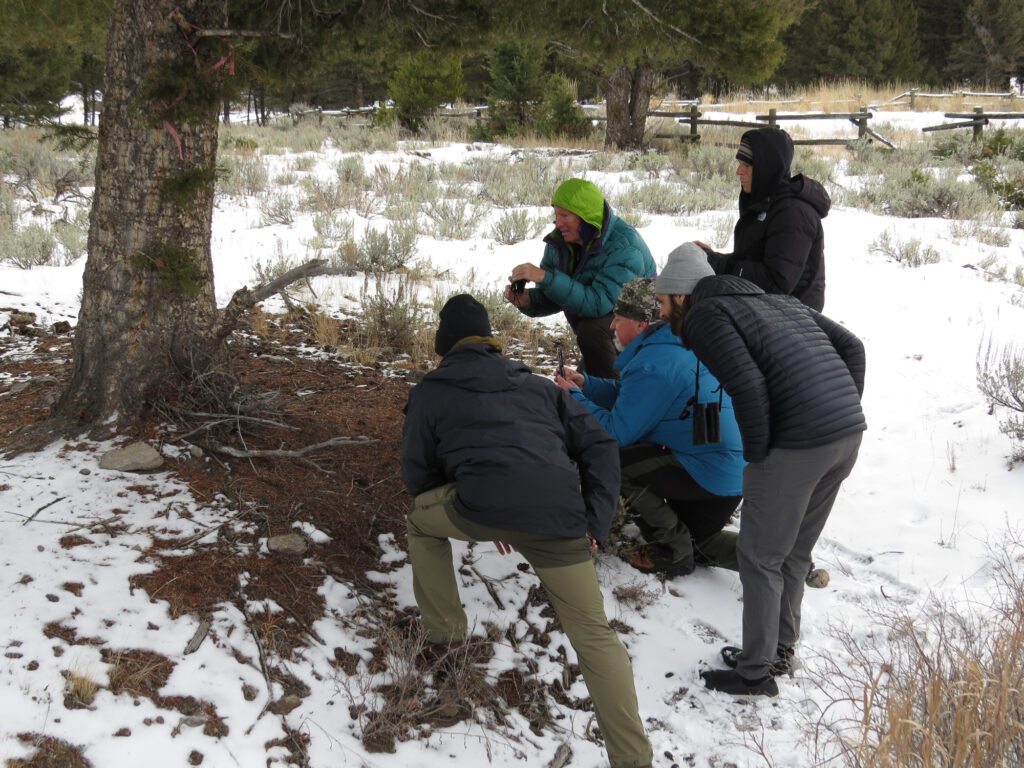
It was still morning twilight, before the blue hour when we started laying the trap. I was part of John Marzluff’s class on ravens in Yellowstone, and we hoped to capture one to band and fit with a transmitter as part of his study.
As we were scattering the bait, two coyotes began yipping and howling just beyond us in the woods, though it was still too dark for us to see them. A third joined in behind us and we paused to listen as the morning conversation went on for several minutes. Then…the very different howl of a wolf from across the valley and the coyotes instantly were silenced.
Getting out the spotting scopes we set them up in the direction of the howls, though the sky was just beginning to lighten. When it was finally bright enough we focused in a pack of wolves on the nearby ridge. Some were lying down, some wrestling and playing and it was clear they had just feasted on a kill and were in a state of postprandial lassitude. Searching the hillside further, we found the large red stain in the snow where the ravens were gathered and a coyote was cautiously approaching. This was the kind of viewing opportunity hoards of visitors seek and for awhile we had it all to ourselves.
Eventually the guided vans appeared and disgorged the long lensers (photographers) and people crowded around the spotting scopes. I have always assiduously avoided these kinds of wolf jams–it feels like being in a zoo to me. There is a real difference between being shown something and discovering something on your own.
As a couple of us turned away from the spotting scopes, we saw a tiny creature scamper from beneath the bus and scurry across the road. One of the men in the group ran after it and managed to capture it, letting it crawl up the arm of his jacket. Abandoning the scopes and the growing crowd, we all came over to view the little shrew until it jumped and headed off for the safety of a nearby tree. The group followed, taking photos of the little creature and watching its behavior. The wolf people thought we were certainly crazy, but…
“Naturalist have been known to measure their experiences by comparing their wildlife encounters with other naturalists of similar interests. When speaking of the Rockies, they often joust their encounters with such animals as Mountain Lions and Grizzly Bears to validate their experience. A true measure of a naturalist’s character, however, may not lie with such sightings as these, but instead with appreciating the under-appreciated. (A shrew) is so rarely seen that any naturalist who does come across it can count him-or herself exceptionally lucky.” From Mammals of the Rocky Mountains

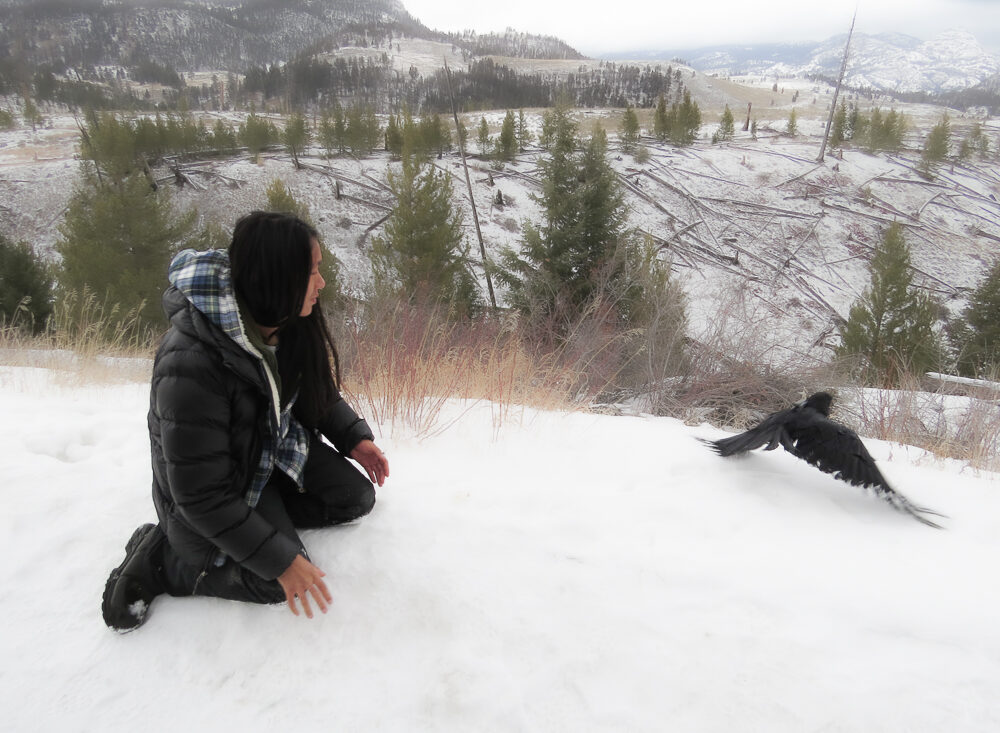

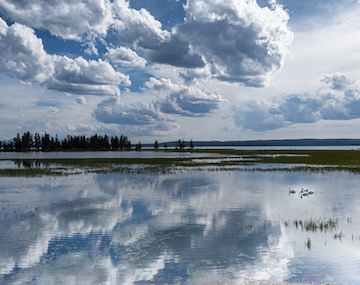
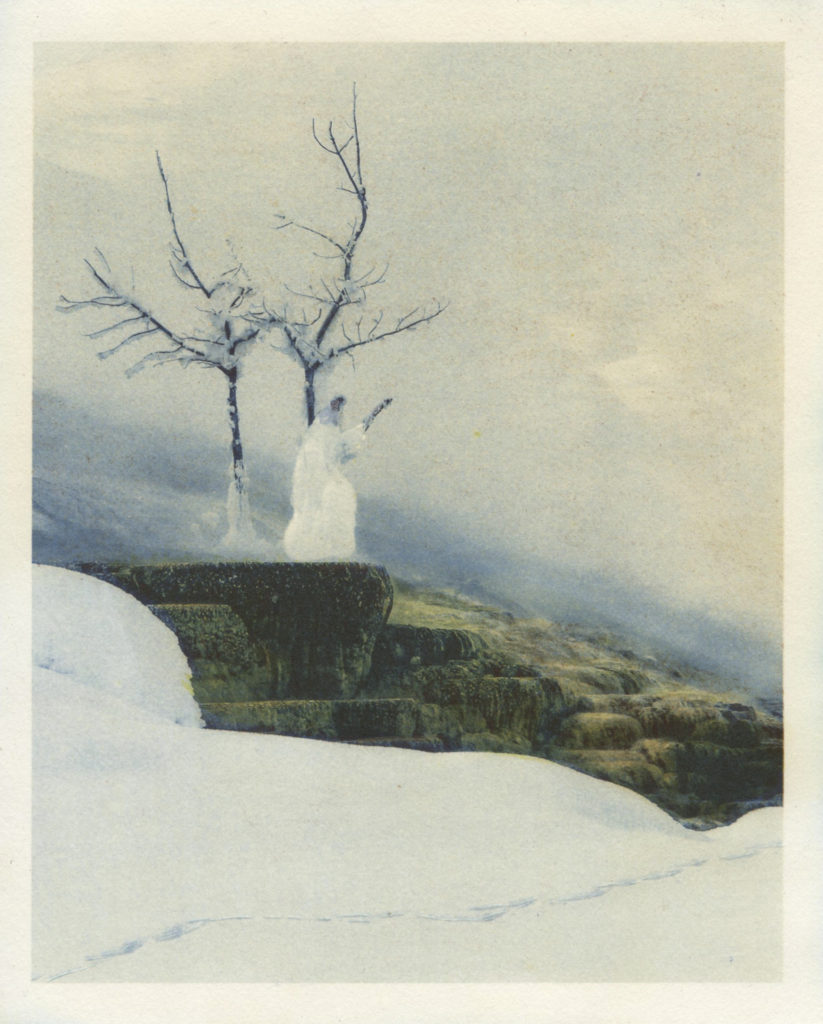
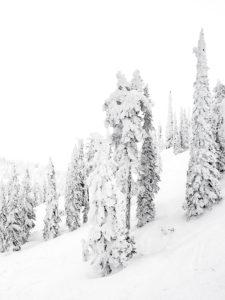
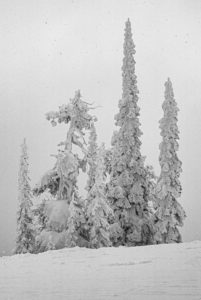
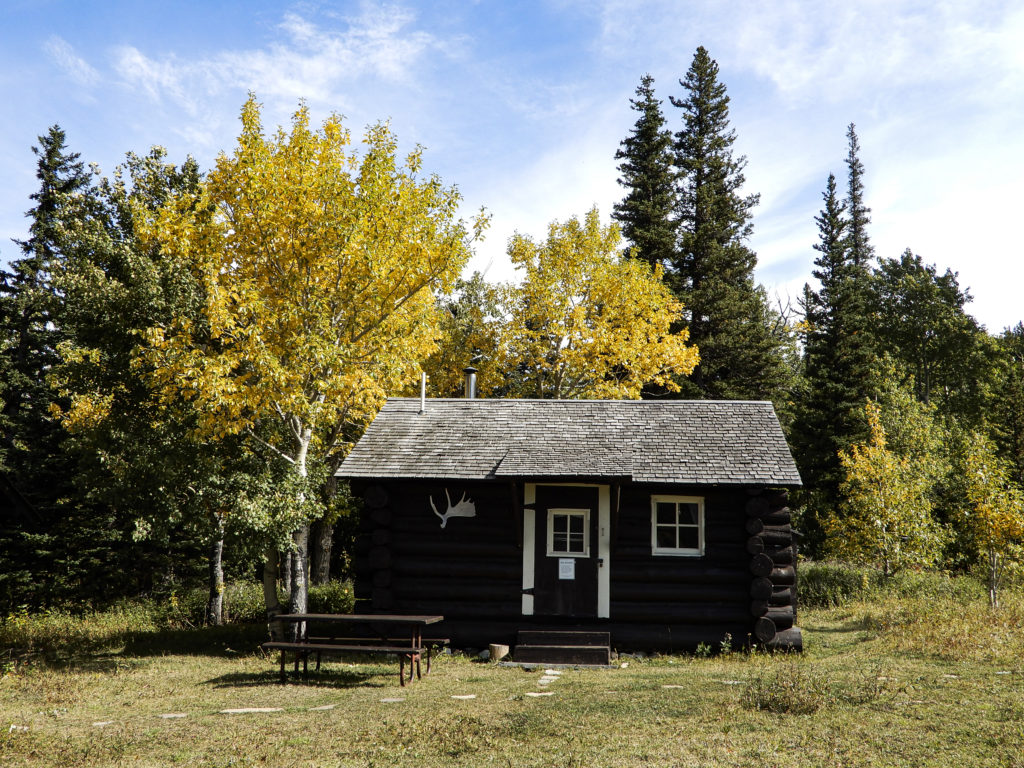
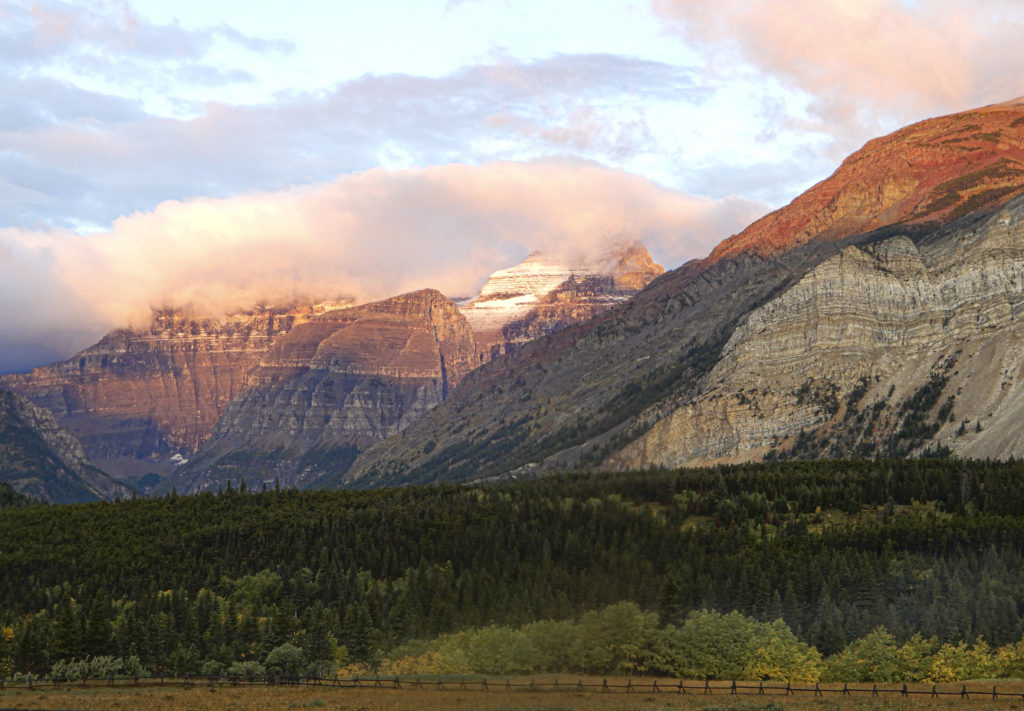
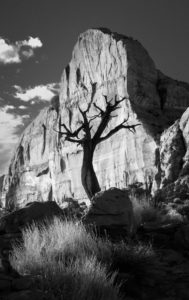 In May I attended the final Moab Photography Symposium. For the last three years I can honestly say the experience, combined with the Terrific Trio workshop in the three days leading up to the larger gathering, has changed my life. I have been “studying” photography for the last 10 years or so–learning my f-stops and depth of field and composition and photoshop techniques. But on my first Terrific Trio workshop with Guy Tal, Bruce Hucko and Colleen Miniuk Sperry, I learned what it is to create art with my camera.
In May I attended the final Moab Photography Symposium. For the last three years I can honestly say the experience, combined with the Terrific Trio workshop in the three days leading up to the larger gathering, has changed my life. I have been “studying” photography for the last 10 years or so–learning my f-stops and depth of field and composition and photoshop techniques. But on my first Terrific Trio workshop with Guy Tal, Bruce Hucko and Colleen Miniuk Sperry, I learned what it is to create art with my camera.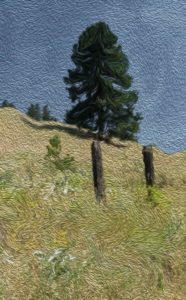
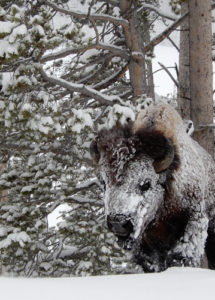
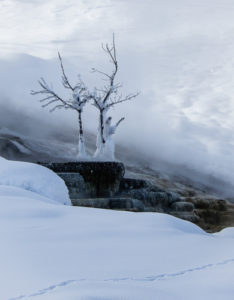 “It is important to attend to the outer world and your responsibilities in it, but sometimes it is just as important to attend to the inner, spiritual world.” words from a tarot card
“It is important to attend to the outer world and your responsibilities in it, but sometimes it is just as important to attend to the inner, spiritual world.” words from a tarot card